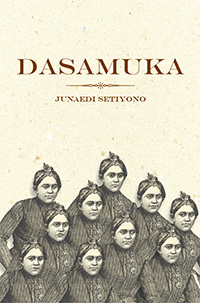Ulasan
Ari J. Adipurwawidjana, Lecturer in English Studies, Universitas Padjadjaran, Bandung, Indonesia:
Not since Joseph Conrad’s so-called Malay stories has a notable piece of writing given the English-speaking world a depiction of the intricacies of nineteenth-century East Indies. This translation of Junaedi Setiyono’s Dasamuka provides more reliable historical anchorage than Conrad, with none of the Modernist verbose prose and excessive moral ponderings. Through the unfiltered eyes and straightforward but inquisitive narration of Willem Kappers, a Scotsman, the novel, critical of the pretense of colonialism as a civilizing mission as well as of patriarchy, both Western and Javanese, shows how colonial, scientific, and personal desires commingle. This translation gives an anglophone voice to Kappers—who is a kind of Lord Jim or Kaspar Almayer, but staged to speak this time in a characteristically Javanese yet feminist way, as Kappers is not only an avid storyteller, but also a keen listener. The subaltern now speaks.
==================
Hendrik M.J. Maier, Luce Professor Southeast Asian Studies, University of California, Riverside:
1811. Self-proclaimed adventurer and scholar Willem Kappers sets out from Edinburgh for Java to find the meaning of the word “bronjong.” During his time in Central Java—first controlled by the British, then by the Dutch—Kappers becomes involved in the intrigue, kidnappings, and corruption centered around the court of the Yogyakarta Sultanate. He feels he is becoming an insider—able to write reports for his British and Dutch employers, while actively experiencing the Javanese way of life.
Thanks to his acquaintance with the mysterious Javanese Dasamuka, Kappers comes to understand the complex meaning of “bronjong”—only to realize he has remained an outsider. He returns to Scotland just before the Diponegoro War.
Dasamuka offers an intriguing picture of Central Java in a time of great turmoil. As suits a good historical novel, facts are hard to disentangle from fiction. Despite Willem Kappers’ self-confident explanations to his readers, it is hard to understand what “Java” is all about, and we are left with colonial arrogance. Only Dasamuka, “the man with ten faces,” seems to know. Fascinating reading that leaves us with many open endings.
==================
Hok G., Berkeley, CA:
I finished reading Dasamuka a few days ago and I am impressed. It is a well-written novel and a spellbinding narration of an unfolding drama, against a very interesting historical background. The choice of using an Englishman as the main character is brilliant; it creates the impression of impartiality and more objectivity than when this person is Dutch. I know a little bit of the history and customs of that period, but not enough to determine what is true and what has been created to make the story more appealing. I presume the large important happenings and the purported timeline are part of established history, as well as the interesting coverage of the customs of the period; the interaction between people of different societal levels. There is the same sadness in the story reminding me of Multatuli’s Max Havelaar and the abuses of the colonial system. But then, Max Havelaar was one of my favorite books even when I was still in high school. The translation has been executed admirably; it is difficult to do this well, because the translator has to stay close to the original script, but yet still make sufficient adjustments so the prose reads smoothly in the literary style of the new language. This is a well-written novel which I will not hesitate to recommend.
==================





